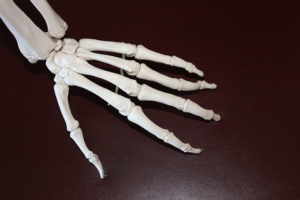Early Biologics Better in Juvenile Idiopathic Arthritis – MedPage Today
For patients with polyarticular juvenile idiopathic arthritis (JIA), a strategy of using early combination therapy led to better outcomes than a traditional step-up approach or initial biologic monotherapy, a prospective observational stud…….

For patients with polyarticular juvenile idiopathic arthritis (JIA), a strategy of using early combination therapy led to better outcomes than a traditional step-up approach or initial biologic monotherapy, a prospective observational study found.
At 24 months, 59.4% (95% CI 47.2-71.5) of patients who had received early combination therapy with a conventional disease-modifying antirheumatic drug (DMARD) plus a biologic had achieved clinically inactive disease (CID) and were off glucocorticoids, according to Yukiko Kimura, MD, of Hackensack University Medical Center in New Jersey.
In comparison, 48% (95% CI 24.5-71.5) of those who had initiated treatment with biologic monotherapy were in CID and off glucocorticoids at 24 months, but only 40.1% (95% CI 32.4-47.7) of those initially given step-up therapy starting with a conventional DMARD and adding a biologic after 3 or more months if needed.
These results “suggest that starting biologics early in polyarticular JIA may lead to better outcomes for many patients,” Kimura said at a plenary session at the American College of Rheumatology (ACR) virtual meeting.
“We know that polyarticular JIA patients [with five or more affected joints] are at risk for poor outcomes, and we have begun to understand that initial therapies are critical in impact on the outcome,” she said.
However, there is very little evidence on what the best time to start biologics might be. Accordingly, the Childhood Arthritis and Rheumatology Research Alliance (CARRA) developed standardized consensus treatment plans to reflect the three most commonly used biologic starting strategies of step-up, early combination, or initial biologic monotherapy.
In the Start Time Optimization of Biologic Therapy in Polyarticular JIA (STOP-JIA) study, which compared the three strategies, patients enrolled in CARRA had data collection every 3 months for the first year and twice during the second year.
For the 12-month outcomes, published recently in Arthritis & Rheumatology, in 400 patients, no significant difference in CID off glucocorticoids was observed: CID was achieved by 37% of those given early combination, by 32% of those using the step-up strategy, and by 24% of the biologic monotherapy group (P=0.17). However, the secondary endpoint of inactive disease on the clinical Juvenile Arthritis Disease Activity Score in 10 joints (JADAS10; score of 2.5 or less) was met by more patients in the early combination plan compared with the step-up plan (59% vs 43%, P=0.03).
A latent class trajectory analysis, also in Arthritis & Rheumatology, for the first year of STOP-JIA identified three trajectories in disease activity improvements — slow, moderate, and rapid. The rapid improvement group was able to attain CID within 6 months, and if biologics were started within 3 months of diagnosis, the odds of being in the rapid improvement group increased by 3.6-fold, supporting the superiority of regimens starting biologics early, Kimura said.
For the 24-month data just presented, which included 177 patients, 64% received the step-up strategy, 27% had early combination treatment, and 9% started on biologic monotherapy.
…….
Source: https://www.medpagetoday.com/meetingcoverage/acr/95518







